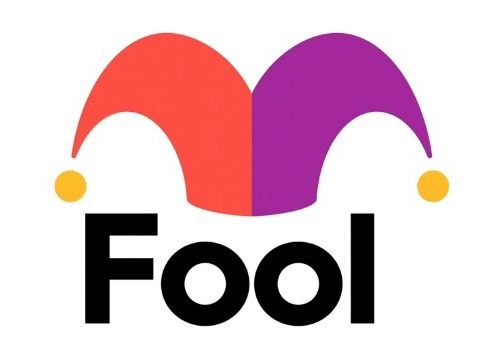If you want to look back on 2025 with great satisfaction, here are some financial moves you might make now or soon:
1. Get out of debt
It’s hard to get ahead if you’re paying 15% or 25% in interest while aiming to earn 8% or 10% on investments. So aim to get out of any high-interest rate debt as soon as you can.
Where to invest $1,000 right now? Our analyst team just revealed what they believe are the 10 best stocks to buy right now. See the 10 stocks »

Image source: Getty Images.
2. Live below your means
Each of us should be living below our means — spending less than we bring in. The greater the difference between what you earn and what you spend, the more money you can free up for retirement savings or for your kids’ college educations or whatever is important to you.
3. Have an emergency fund
Unless you’re financially independent, you’ll want to have an emergency fund at the ready, able to cover at least three or more months’ worth of all nonnegotiable expenses (such as taxes, housing, food, transportation, utilities, etc.). You may not expect to be laid off or to face sudden huge expenses such as a big car repair or major surgery, but it can happen. If you have an emergency fund to tap at such times, you won’t have to break into savings or retirement accounts or take on any debt.
4. Rebalance your portfolio
We at the Motley Fool often extol the virtue of investing in great companies (or great and powerful index funds) — and then leaving those investments alone to grow over long periods. Legendary investor Warren Buffett, too, has said that his favorite holding period is forever.
Still, it’s sometimes smart to rebalance your portfolio. Imagine, for example, that you’re getting close to retirement or are already retired, and you want to have a portfolio split 60-40, respectively, between stocks and bonds. Well, stocks tend to grow more quickly than bonds, so after some years, your portfolio may be 80% stocks and 20% bonds. If so, you might rebalance, selling some stocks and buying more bonds, to get back to or closer to your desired asset allocation.
5. Make good use of retirement accounts
To set yourself up for a promising 2025 and many years beyond that, make good use of tax-advantaged retirement accounts such as IRAs and 401(k)s. Each comes in two main varieties — traditional and Roth.
A traditional account receives pre-tax contributions and shrinks your taxable income by the amount of your contribution. A Roth account accepts post-tax money, and if you play by the rules, all your withdrawals in retirement can be tax-free. Imagine amassing an account worth, say, $400,000 by retirement and being able to tap that, tax-free — that’s a big deal!
IRA contribution limits for 2025 are $7,000 — or $8,000 if you’re 50 or older. If you have several IRA accounts, that limit is for all of them — so you might contribute $4,000 to one and $3,000 to another, but not $7,000 to each. The 401(k) contribution limit is $23,500 for 2025, with a $7,500 catch-up contribution allowed for those 50 or older.
6. Set up an HSA if you can — or an FSA
Not everyone will qualify for a health savings account (HSA) — you need to have a high-deductible health insurance plan. If you can open and use an HSA, though, it can be well worth doing so. You contribute money to your HSA on a pre-tax basis, and that moola can be used to pay for qualified healthcare-related expenses, such as medications, doctor visits, orthodontia, lab work, surgery, and much more. Better still, any money not used from the account can stay in it and grow, and you can tap it in retirement. (And if you withdraw money then for qualified healthcare expenses, it will be tax-free.)
If you can’t use an HSA, look into whether your employer offers a flexible spending account (FSA), via which you can put money aside for healthcare or dependent care. Note that FSA money is use-it-or-lose-it each year.
7. Update your beneficiaries
Here’s another smart move: Update the beneficiaries on your various accounts, if updates are warranted. For example, if you’re now divorced, you might not want to leave your ex-spouse in line to inherit certain accounts. If you’ve fallen out with a sibling, or you have new stepchildren you love, you might tweak your beneficiaries accordingly.
8. Get those estate planning documents in order
If you haven’t already done so, have important estate planning documents drawn up — including a will, a durable power of attorney, a healthcare power of attorney, a living will or advance directive, and guardianship designations if you’re a parent of minors. If you have prepared these documents but it’s been a few years and/or your life circumstances have changed, consider updating any or all of the documents. Many people might want to consider setting up a trust, too.
And don’t put these tasks off, thinking you’re too young for them — don’t tempt fate, because it’s very possible that you’ll need one or more of them in your 30s or 40s.
9. Game-ify your financial life
Finally, since managing your finances isn’t typically very exciting (though watching your money grow like gangbusters certainly is exciting), consider “game-ifying” some parts of your money management. For example:
- Try to spend less each week at the supermarket than the week before. You won’t be able to do this indefinitely, but you might last a few months.
- Consider competing with friends: See who can save the most money each month.
- Take on a pantry challenge: See how long you can get by without doing any food shopping or dining at restaurants. You probably have a lot of food in your fridge and/or freezer and pantry to support you for a while.
- Start tracking your credit score and working on getting it higher. Perhaps compete with loved ones to see who can boost their score the most.
- Set debt-reduction goals and keep track of your progress.
- Increase your automatic contributions to 401(k) accounts each year, and work to get by on less.
Note that a little hunting online will turn up some apps that can help you have more fun with your money management.
If you act on some or all of these smart money moves, you’ll likely end 2025 in a stronger financial position — and proud of yourself, too.
The $22,924 Social Security bonus most retirees completely overlook
If you’re like most Americans, you’re a few years (or more) behind on your retirement savings. But a handful of little-known “Social Security secrets” could help ensure a boost in your retirement income. For example: one easy trick could pay you as much as $22,924 more… each year! Once you learn how to maximize your Social Security benefits, we think you could retire confidently with the peace of mind we’re all after. Simply click here to discover how to learn more about these strategies.
View the “Social Security secrets” »
The Motley Fool has a disclosure policy.
 benzinga.com
benzinga.com fool.com
fool.com



